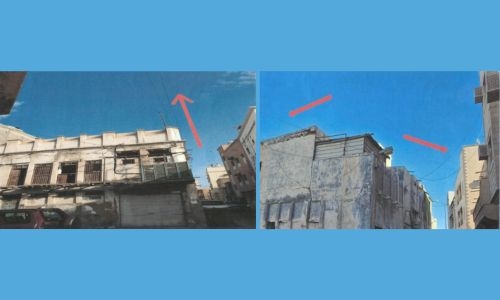Decades-old internet cables in Muharraq’s historic districts have become a safety hazard due to their low-hanging positions across narrow lanes. Blocks 203, 205, 206, and 209 are particularly affected, leading to concerns about safety risks and pest problems. Councillor Dalal Al Moqahwi has highlighted the need to address this issue as it not only poses a danger but also impacts the area’s unique character. The cables, installed over 20 years ago by residents sharing internet connections, have turned into an eyesore, prompting the municipal council to take urgent action.
The municipal council has called for collaboration with various ministries to locate and remove the most hazardous cables. A recent meeting highlighted the importance of working with the Ministry of Municipalities Affairs, Civil Defence, and the Health Ministry to address the issue. The team will assess which cables are at high risk of causing harm and may require protective coverings. Al Moqahwi emphasized the need for swift action to ensure the safety of residents, especially as Muharraq undergoes revitalization efforts to become a cultural and tourist hub.
In addition to the safety concerns posed by the low-hanging cables, they have also become a breeding ground for rats and insects in the area. This further contributes to the deteriorating condition of Muharraq’s old city and affects the quality of life for residents. By removing these outdated cables, not only will the safety risks be mitigated, but the overall aesthetics and cleanliness of the neighborhood will be improved. Residents have expressed their concerns about the growing pest problem, urging authorities to take immediate action to address the situation.
The historic significance of Muharraq’s old city makes it imperative to preserve its unique character and charm. The presence of low-hanging internet cables not only compromises the safety of residents but also detracts from the area’s cultural and historical appeal. As Bahrain continues its efforts to revitalize Muharraq as a cultural and tourist destination, it is essential to address infrastructure issues such as these outdated cables. By collaborating with relevant authorities and taking proactive measures to remove and secure the hazardous cables, Muharraq can maintain its heritage while welcoming visitors to experience its rich cultural heritage.
The collaboration between the municipal council and various ministries reflects a collective effort to address the safety and aesthetic concerns posed by the low-hanging cables in Muharraq’s historic districts. The recognition of the need for urgent action highlights the seriousness of the situation and the commitment to ensuring the well-being of residents. By prioritizing the removal of hazardous cables and implementing protective measures, authorities are taking proactive steps towards improving the living conditions in the neighborhood. This collaborative approach sets a precedent for addressing similar infrastructure challenges in other heritage areas across Bahrain, showcasing the importance of preserving the country’s cultural and historical heritage.
In conclusion, the presence of low-hanging internet cables in Muharraq’s historic districts poses a significant safety hazard and detracts from the area’s cultural and historical appeal. By addressing this issue through collaboration between the municipal council and relevant ministries, authorities are taking a proactive approach to mitigating safety risks and improving the aesthetics of the neighborhood. Residents and officials alike recognize the urgency of removing these outdated cables to ensure the well-being of residents and preserve Muharraq’s unique character. As Bahrain works towards revitalizing Muharraq as a cultural and tourist hub, addressing infrastructure challenges such as these outdated cables is crucial to the area’s renewal and continued success as a heritage destination.











